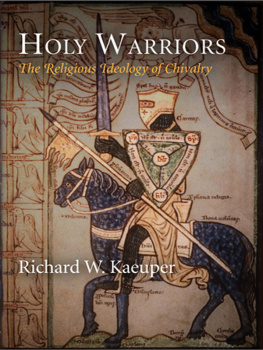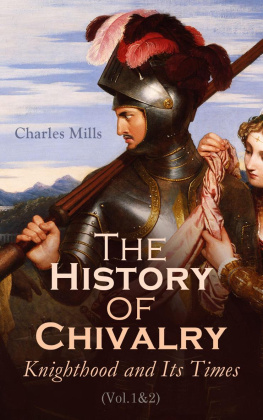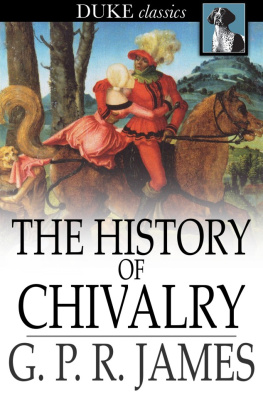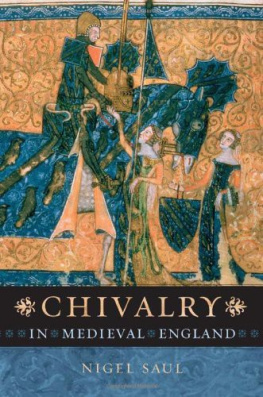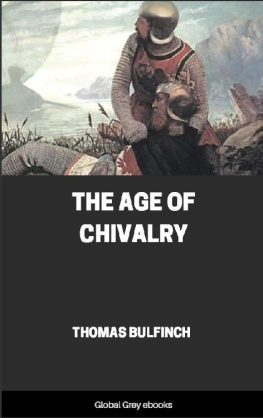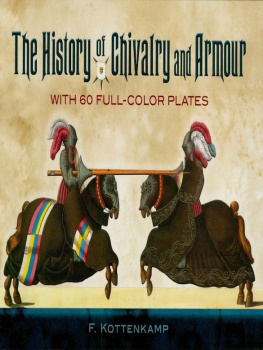Kaeuper - Holy warriors: the religious ideology of chivalry
Here you can read online Kaeuper - Holy warriors: the religious ideology of chivalry full text of the book (entire story) in english for free. Download pdf and epub, get meaning, cover and reviews about this ebook. City: Philadelphia, year: 2014, publisher: University of Pennsylvania Press, Inc., genre: Religion. Description of the work, (preface) as well as reviews are available. Best literature library LitArk.com created for fans of good reading and offers a wide selection of genres:
Romance novel
Science fiction
Adventure
Detective
Science
History
Home and family
Prose
Art
Politics
Computer
Non-fiction
Religion
Business
Children
Humor
Choose a favorite category and find really read worthwhile books. Enjoy immersion in the world of imagination, feel the emotions of the characters or learn something new for yourself, make an fascinating discovery.
Holy warriors: the religious ideology of chivalry: summary, description and annotation
We offer to read an annotation, description, summary or preface (depends on what the author of the book "Holy warriors: the religious ideology of chivalry" wrote himself). If you haven't found the necessary information about the book — write in the comments, we will try to find it.
Kaeuper: author's other books
Who wrote Holy warriors: the religious ideology of chivalry? Find out the surname, the name of the author of the book and a list of all author's works by series.
Holy warriors: the religious ideology of chivalry — read online for free the complete book (whole text) full work
Below is the text of the book, divided by pages. System saving the place of the last page read, allows you to conveniently read the book "Holy warriors: the religious ideology of chivalry" online for free, without having to search again every time where you left off. Put a bookmark, and you can go to the page where you finished reading at any time.
Font size:
Interval:
Bookmark:

THE MIDDLE AGES SERIES
Ruth Mazo Karras, Series Editor
Edward Peters, Founding Editor
A complete list of books in the series is available from the publisher.
Copyright 2009 University of Pennsylvania Press
All rights reserved. Except for brief quotations used for purposes of review or scholarly citation, none of this book may be reproduced in any form by any means without written permission from the publisher.
Published by
University of Pennsylvania Press
Philadelphia, Pennsylvania 19104-4112
Printed in the United States of America on acid-free paper
10 9 8 7 6 5 4 3 2 1
Library of Congress Cataloging-in-Publication Data
Kaeuper, Richard W.
Holy warriors : the religious ideology of chivalry / Richard W. Kaeuper.
p. cm.(The Middle Ages series)
ISBN 978-0-8122-4167-9 (alk. paper)
Includes bibliographical references and index.
1. ChivalryReligious aspects. 2. ChivalryEuropeHistoryTo 1500. 3. Knights and knighthoodEuropeHistoryTo 1500. 4. Chivalry in literature. 5. Civilization, Medieval. 6. EuropeChurch history6001500. I. Title.
CR4519.K347 2009
940.1dc22 2009004274
Frontispiece: An illustration of idealized knighthood in a righteous struggle against sin and vice. From a thirteenth-century treatise on virtues and vices by William of Peraldus, Summa de vitiis. British Library Harley Manuscript 3244, folios 27b, 28. Copyright British Library.
To Margaret
Wer ein solches Weib errungen
Stimm' in unsern Jubel ein!
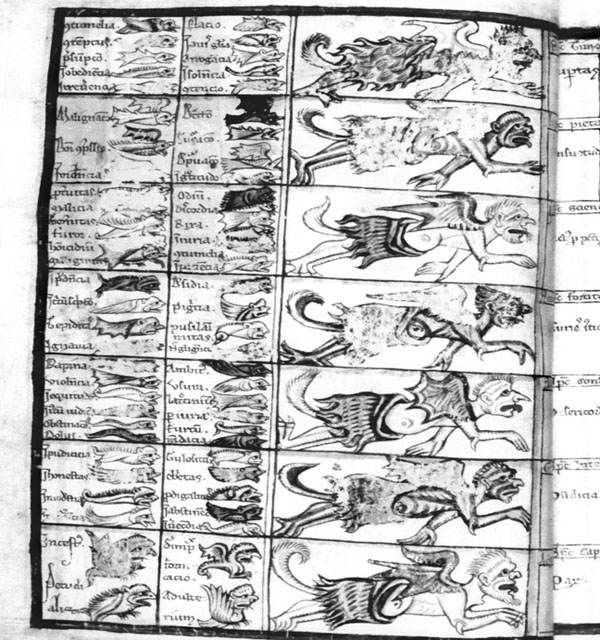
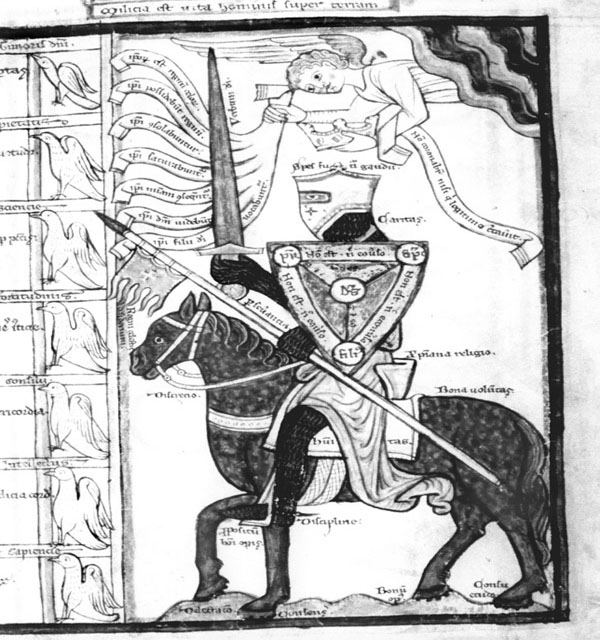
COMING UNEXPECTEDLY UPON the splendid manuscript painting in British Library Harley 3244 (folios 27b, 28) provided one of those moments that richly reward scholarly work in archives. This striking mid-thirteenth-century illumination vividly portrays knighthood in a righteous struggle against sin and vice. This is the book for which our stunning illustration now provides a frontispiece.
The painting can likewise serve to introduce the present book on the religion of knights. Carefully planned and beautifully drawn, the bifoliate illumination brings chivalry and religion into the same conceptual frame-work. Yet the right-hand page irresistibly draws the reader's eye first, for with much boldness and confidence it presents a mounted knight fully encased in mid-thirteenth-century armor, ready for rough action with lance and drawn sword. At the top of this page a Latin inscription (emphasized by being outlined and written in red ink) serves as caption for the full painting; it quotes a passage from the Book of Job (7:1): Militia est vita hominis super terram (human life on earth is militia). Equally interesting, the angel holds in its right hand a set of seven scrolls that bear equally potent language; in short form they convey the Beatitudes, those transforming sayings of Christ in the Sermon on the Mount. Their presentation here is intriguing. In each case the heavenly blessing for the recipient is noted, though the requisite human activity or state, even if assumed, is omitted. Thus the banderoles simply promise the holy warriors that
Theirs is the kingdom of heaven (ipsorum est regnum celorum)
They shall inherit the kingdom (ipsi possedebunt regnum)
They shall be comforted (ipsi consolabuntur)
They shall be filled (ipsi saturabuntur)
They shall have mercy (ipsi misericordiam consequentur)
They shall see God (ipsi deum videbunt)
They shall be called sons of God (ipsi filii dei vocabuntur).
As if the symbolic knight's fight against evil is merit enough to earn such divine favor, the requirements for receiving each of these blessings are not specified. In other words, there is no stated injunction that the recipients are to be poor in spirit, meek, hungering and thirsting for righteousness, merciful, pure in heart, peacemakers, no stipulation that it is those who mourn who shall be comforted. We might already sense tension between the martial words from Job and the spirit of the Beatitudes, between the determined knight, weapons at the ready, and these forgiving, pacific sentiments from the Sermon on the Mount, possibly even between the full import of the Beatitudes and their shortened form, reduced to benefits received, as they are quoted here. A battle-ready knight is about to be festooned with streamers at least recalling the virtues of mercy, peace, and forbearance, though they are not specified. The conjuncture of ideas seems jarring.
The martial theme in the illumination cannot be doubted. A desperate combat is about to erupt from the vellum pages, more desperate and noisy than the briefly threatened intrusion of the bestiary. The eye of the knight, clearly visible through the narrow slot in his great helm, is sternly set on what will soon assault him from the left page, for as noted, this composite illumination spreads impressively across two folio pages. From the left folio advance serried ranks of grotesque demons representing the seven deadly sins, each sin backed by a cluster of smaller figures of supporting vices in a wonderfully medieval hierarchical pattern. Avarice, a chief sin, is for example backed by a smaller demon labeled usury. The knight has allies too, the seven Gifts of the Holy Spirit pictured as doves ranked before him on his side of the illustration, facing the enemy. But these pale and pacific birds hardly inspire confidence as stout or effective coadjutors in the fight to come. Moreover, the forces of right are desperately outnumbered; the sides stand sixty-nine to eight. Yet the viewer need not fear the outcome, for the knight is surely an ideally stalwart fighter for the right, however rampant and numerous the menacing forces of evil marshaled against him. Exactly how this warrior fits into the world of Beatitudes remains an issue, perhaps even a paradox.
As a first step toward understanding this tension and how it was resolved, we need to recognize that our illustration, however splendid, is a piece of collusive propaganda. Its visual and verbal program portrays the ideal knight as both pious and fiercely martial, a combination more easily shown in ideal form (as a fight against evil) than could be achieved within the messy details of daily life. Clerics advanced this ideal for knighthood and knights might have been happy to accept it as a flattering and valorizing representation of their profession. Yet it is most emphatically not a realistic picture, not a description of what knights actually were or what they actually did in a world much troubled by the consequences of sin if not by visible demons. This illustration, in other words, is prescriptive rather than descriptive. Powerfully presented, it shows us what clerics ardently wanted knights to be, even how knights might have liked to see themselves portrayed. Yet it would be a great error to accept this idealized and wishful view as displaying the essence of chivalry; it belongs rather to an effort that flattered warrior sensibilities as it tried to engage warrior piety and direct warrior energies.
These considerable energies in the knights had to be fitted within a society working to create order in a great many dimensions of life: not only governmental, legal, and religious, but also socioeconomic, and intellectual. Broadly governmental or political frameworks were being established by lay authority just as guidelines of doctrine and governing ecclesiastical structure were being elaborated by clerics. Textbook accounts too often bring chivalry into this broad picture of governance and social order without ambiguity, as a unidirectional force for peace and order. Chivalry is so easily sketched as a straightforward internalization of restraint among the warriors, knocking off the rough edges and making them proto-gentlemen. Violence and war, in this view, would be less likely, or at least (to borrow the phrase of an American president) kinder and gentler. In
Font size:
Interval:
Bookmark:
Similar books «Holy warriors: the religious ideology of chivalry»
Look at similar books to Holy warriors: the religious ideology of chivalry. We have selected literature similar in name and meaning in the hope of providing readers with more options to find new, interesting, not yet read works.
Discussion, reviews of the book Holy warriors: the religious ideology of chivalry and just readers' own opinions. Leave your comments, write what you think about the work, its meaning or the main characters. Specify what exactly you liked and what you didn't like, and why you think so.

